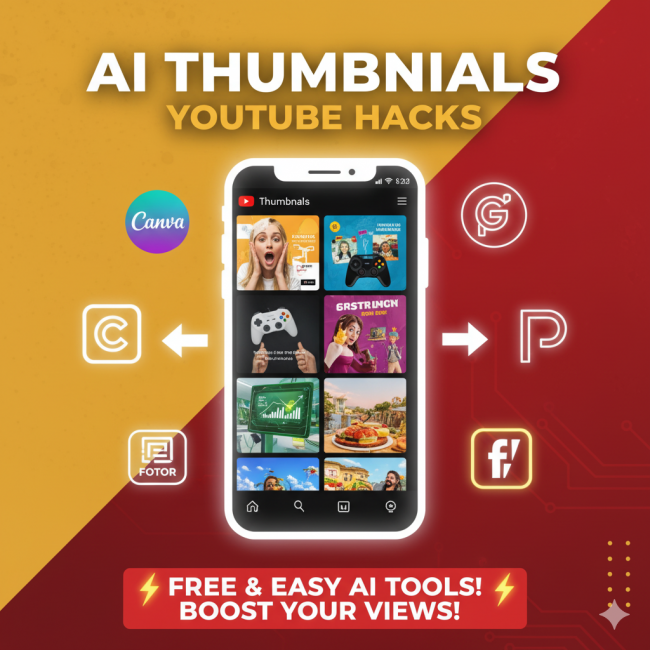Table of Content
- How to Automate Your Social Media Posts with AI
- What is Social Media Automation?
- Why Automation is Essential in 2025
- Who’s Using It?
- The Best AI Tools for Automation
- How to Automate Your Posts Step by Step
- Extra Tips for Smarter Automation
- Common Pitfalls to Avoid
- Real-World Case Studies: How Automation Scales Engagement
- Final Thoughts
How to Automate Your Social Media Posts with AI
Managing social media today can feel like a full-time job. Between creating content, posting consistently, and responding to engagement, many brands struggle to keep up. Whether you’re a business owner, marketer, or content creator, the challenge is the same: how do you stay consistent without burning out?
The answer lies in AI-powered social media automation. With the right tools, you can schedule posts, track analytics, and even optimize content performance—without spending hours every day online.
What is Social Media Automation?

Social media automation is the use of AI-driven tools to handle repetitive tasks like scheduling, posting, and analyzing performance. Instead of manually uploading content across different platforms, you plan once, and automation tools do the rest.
But modern automation goes beyond scheduling. With AI, you can:
- Identify the best posting times based on audience behavior
- Generate captions, hashtags, and content ideas
- Curate trending content aligned with your niche
- Access performance insights that guide your strategy
- This means you’re not just saving time—you’re working smarter.
Why Automation is Essential in 2025
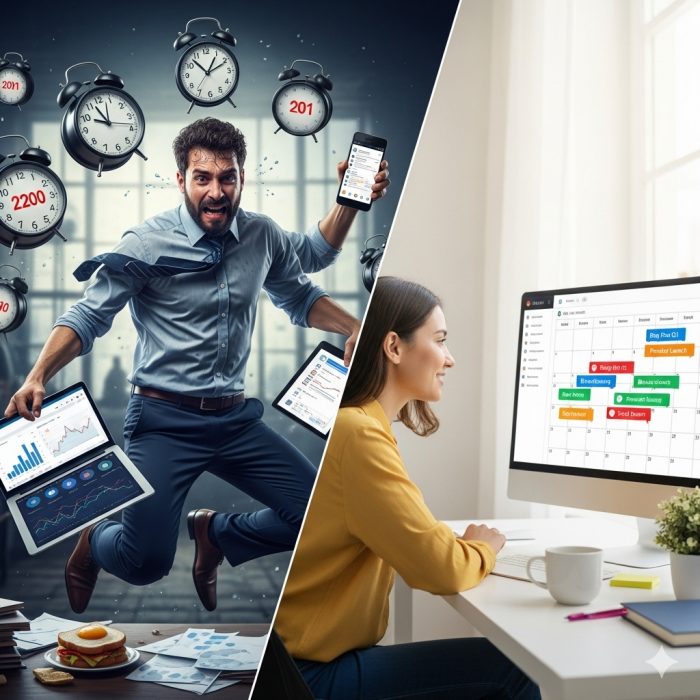
Time Efficiency
Businesses save an average of 6 hours per week using automation tools (Hootsuite). That’s nearly 24 hours a month freed up for product development, customer support, or personal time.
Consistency Builds Trust
Your audience expects regular updates. Automation ensures you never miss a posting day, helping you build brand credibility.
Better Engagement
AI finds the best times to post so your content reaches people when they’re most active. Sprout Social found engagement improves by 20% when posts are scheduled optimally.
Data-Driven Strategy
Every post becomes a learning opportunity. Automation tools analyze performance so you can double down on what works and cut out what doesn’t.
Who’s Using It?
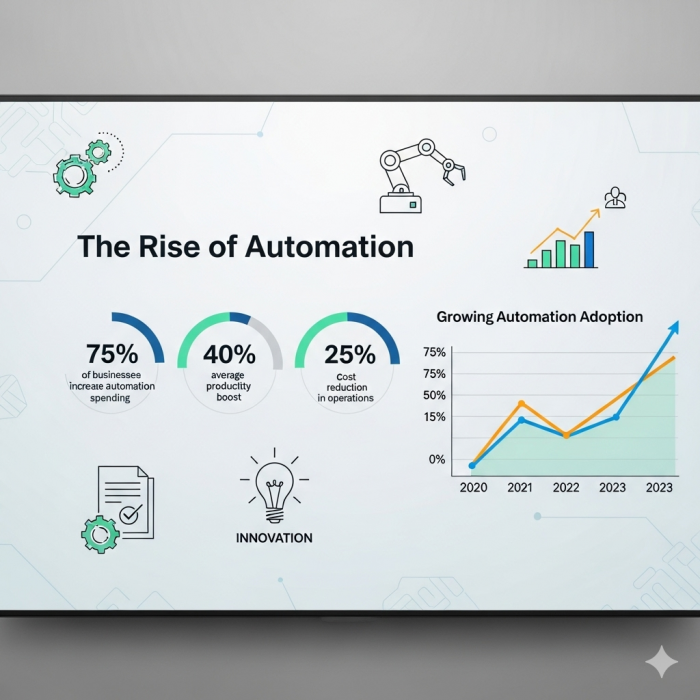
Automation is no longer a luxury—it’s the norm.
91% of businesses with over 10 employees use social media marketing.
80% of them rely on automation tools (HubSpot).
77% of marketers schedule posts with AI-driven tools (Social Media Examiner).
This widespread adoption shows automation is a proven growth driver, not just a trend.
The Best AI Tools for Automation
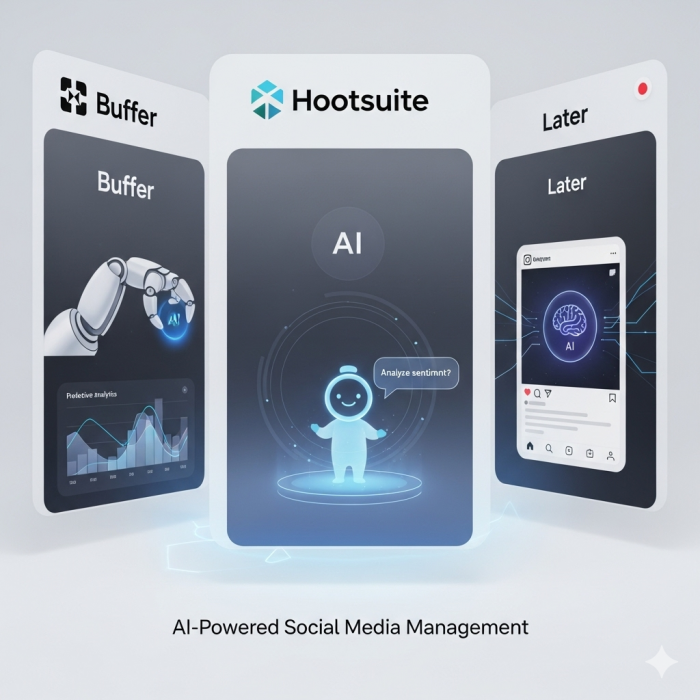
1. Buffer – Simple & Reliable
Best for: Small businesses and startups
Key strengths: Scheduling, AI-driven content recommendations, analytics
Value tip: Use Buffer’s queue feature to maintain a steady posting flow without manual effort.
2. Hootsuite – Enterprise Power
Best for: Agencies and large businesses
Key strengths: AI-powered social listening, 35+ integrations, deep analytics
Value tip: Leverage Hootsuite’s AI recommendations to post at your audience’s peak engagement times.
3. Later – Visual-First Planning
Best for: Instagram, TikTok, and visual-heavy brands
Key strengths: Drag-and-drop content calendar, Instagram analytics, AI-suggested captions
Value tip: Use Later’s preview grid to ensure your feed looks cohesive before posts go live.
How to Automate Your Posts Step by Step
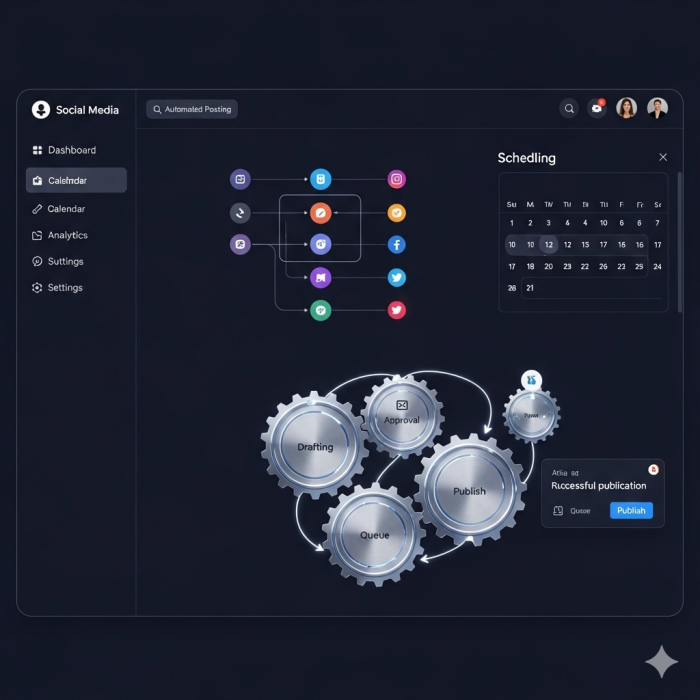
Step 1: Pick the Right Tool
Choose based on your goals: Buffer for simplicity, Hootsuite for scale, Later for visuals.
Test free trials before committing to paid plans.
Step 2: Connect Your Accounts
Link your social platforms inside the tool.
Ensure your tool supports all content types you need (e.g., Instagram Stories, LinkedIn articles).
Step 3: Build a Content Calendar
Plan posts around campaigns, events, and trends.
Maintain balance: mix promotional posts with value-driven and engaging content.
Example: Tutorials on Mondays, testimonials midweek, behind-the-scenes on Fridays.
Step 4: Use AI to Optimize Content
Review past performance to see what resonates.
Get AI-recommended captions and trending hashtags.
Curate external content to add variety.
Step 5: Schedule for Peak Times
Post when your audience is most active—AI tools analyze this for you.
Use auto-scheduling if you don’t want to guess optimal times.
Maintain a content queue so your feed never runs dry.
Step 6: Track & Refine
Use built-in analytics to measure reach, clicks, and engagement.
Run A/B tests: Try two captions for similar posts and see which performs better.
Adjust frequency and content type based on results.
Extra Tips for Smarter Automation
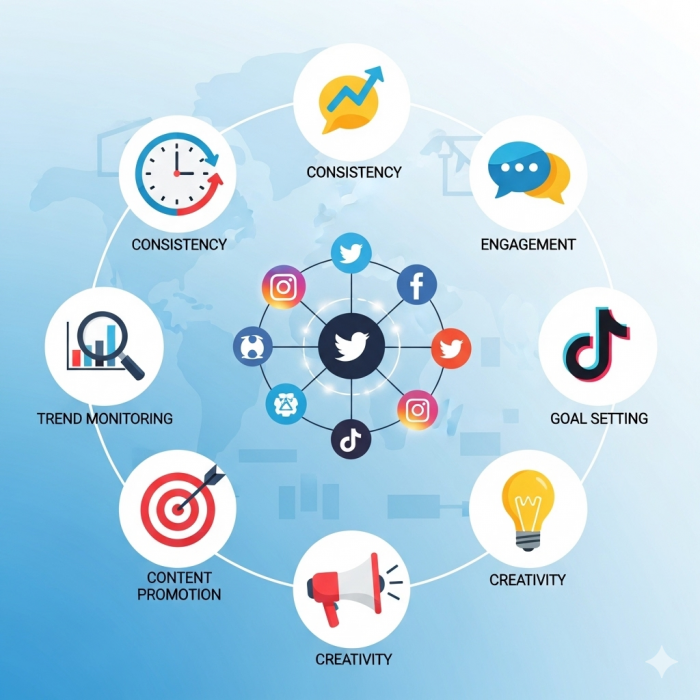
→Stay Human: Automation handles posting, but engagement—like replying to comments—should stay personal.
→Follow Trends: Use AI suggestions, but also watch real-time trends to stay relevant.
→Batch Your Work: Spend 1–2 hours weekly creating and scheduling posts for the entire week.
→Repurpose Content: A blog post can be broken into multiple tweets, Instagram carousels, or LinkedIn updates.
Common Pitfalls to Avoid
- Over-Automation: A fully robotic feed lacks authenticity. Balance automation with genuine interaction.
- Ignoring Platform Rules: Instagram, for example, limits certain automation features—know what’s allowed.
- One-Size-Fits-All Posting: Each platform has its own audience culture. Customize instead of copy-pasting content everywhere.
Real-World Case Studies: How Automation Scales Engagement
Case Study 1: Local Coffee Shop Boosts Foot Traffic
A small coffee shop in Austin used Buffer to schedule daily Instagram posts featuring their drinks and promotions. By automating posts at peak morning hours (7–9 AM), they saw a 30% increase in foot traffic within two months. The consistency helped customers anticipate deals and new menu launches.
Case Study 2: Influencer Grows Engagement with Later
An Instagram lifestyle influencer struggled to keep up with daily posting. After switching to Later’s drag-and-drop calendar, she batched content creation weekly and scheduled everything in advance. With AI-suggested captions and optimized posting times, her engagement rate jumped by 22% in just three months.
Case Study 3: Marketing Agency Saves 20 Hours Weekly with Hootsuite
A mid-sized digital marketing agency managing 15+ client accounts adopted Hootsuite for bulk scheduling and analytics. By automating repetitive tasks, they saved nearly 20 hours per week across the team. The freed-up time allowed them to focus on creative strategy and client communication, leading to better retention rates.
Final Thoughts
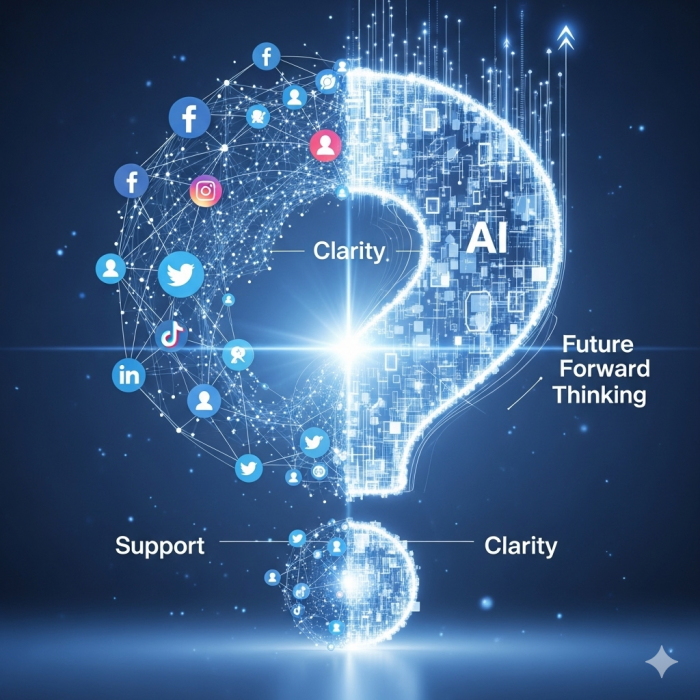
AI-powered automation makes social media manageable, consistent, and effective. With tools like Buffer, Hootsuite, and Later, you can schedule smarter, engage better, and scale faster—all while saving hours each week.
But remember: the real power comes when automation and human creativity work together. Let AI handle the routine, while you focus on storytelling, connection, and brand authenticity. That’s how you win in today’s digital world.
Post Comment
Be the first to post comment!
Related Articles

How I Automated My Whole Day Using Simple Tech Hacks
Nov 29, 2025


